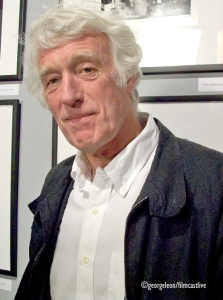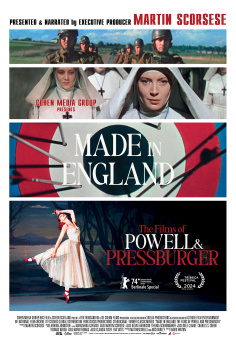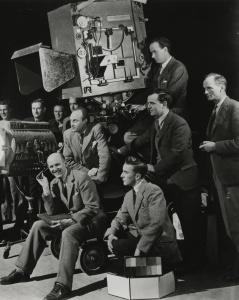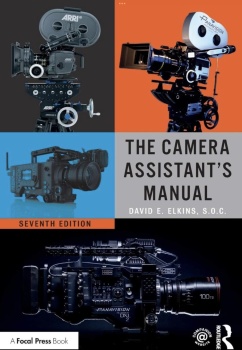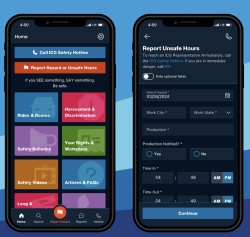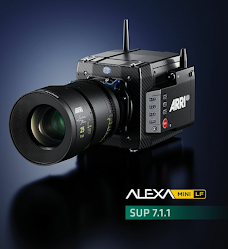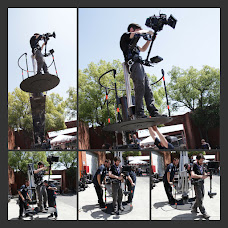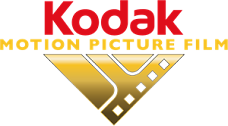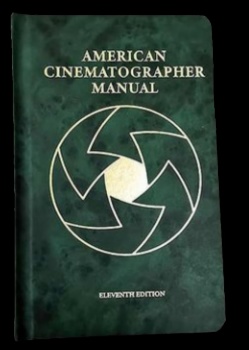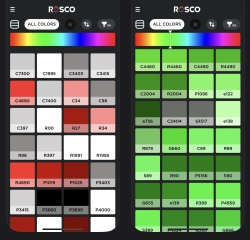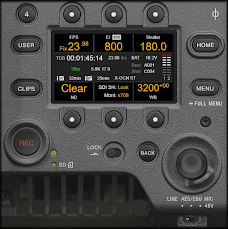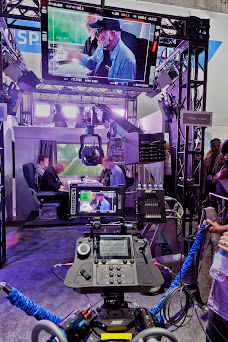CINE GEAR EXPO 2022 INDUSTRY AWARDS & KARL KRESSER TRIBUTE
NEW ALEXA 35 - 4.6K SUPER 35 DIGITAL CAMERA
ALEXA 35 is the smallest fully featured ARRI production camera ever, packing the features and processing power of a larger ALEXA into a Mini-sized body that can record native 4K at up to 120 fps. Fast and easy operation is assured through numerous usability improvements and a simple menu structure that will be intuitively familiar to crews. ALEXA 35 is the best A-camera, B-camera, and action camera on the market, all rolled into one.
Designed for flexibility
Five interchangeable lens mounts, two scratch mics, and internal FSND filters make ALEXA 35 ideal for changing shooting requirements. ACs will love the body-mounted LBUS connector, built-in serial port for distance measuring devices, and hot-pluggable viewfinder.
For over a decade the ARRI ALEXA camera family has set the gold standard for digital cinematography. Now, ALEXA 35 raises the bar even higher with a new Super 35 format 4.6K sensor and REVEAL Color Science.
17 stops of dynamic range
2.5 more stops than previous ALEXA cameras, with filmic highlight roll-off
Natural and beautifully rendered skin tones
Subtler tonal variations for immersive and emotionally powerful images
Easy workflow with REVEAL Color Science
REVEAL Color Science logo - POS - LARGE - RGB
ARRI Debayer Algorithm ADA-7
ARRI Color Engine ACE4
ARRI Wide Gamut AWG4
LogC4 Curve
LogC4 Look Up Tables
Backwards Compatible
ARRI Debayer Algorithm ADA-7
First step in the new and improved image pipeline
4.6K Super 35 sensor
Wide lens choice
ALEXA 35 can be used with a vast array of lenses--modern and vintage, anamorphic and spherical, Super 35 and large-format. If you want to shoot with ARRI cameras while fulfilling native 4K mandates, you now have an immeasurably broader lens choice.
19 recording formats
A total of 19 ARRIRAW and Apple ProRes recording formats, incorporating efficient in-camera downsampling and anamorphic de-squeezing, allow you to optimize data rate, resolution, and other parameters, based on your individual needs.
Choose your digital film stock
ARRI Textures allow you to alter the amount and character of grain in the image, and the amount of contrast at different levels of detail, perceived as sharpness. Previous ALEXA cameras were pre-programmed with a default texture, but ALEXA 35 lets you choose from a menu of ARRI Textures, like selecting a film stock.
Designed for flexibility
Five interchangeable lens mounts, two scratch mics, and internal FSND filters make ALEXA 35 ideal for changing shooting requirements. ACs will love the body-mounted LBUS connector, built-in serial port for distance measuring devices, and hot-pluggable viewfinder.
New side display
Read status and change settings without a viewfinder via the new camera left-side display and jog wheel. Great for TRINITY, Steadicam, Easyrig, drones, and cranes.
HDR viewfinder
Familiar MVF-2 viewfinder and menu structure from ALEXA Mini LF; now with the option to switch to HDR viewing in the eyepiece.
Integrated electronic modules
The Power Distribution Module PDM-1 (center) offers seven extra power accessory outputs, while the Audio Extension Module AEM-1 (right) provides two incredibly clean microphone preamp channels for onboard audio recording, as well as extra power outputs.
Media bay for Compact Drive 1TB and 2TB
All existing 1TB compact drives will work with the ALEXA 35, and the new 2TB version brings incredibly high frame rates to uncompressed ARRIRAW recording.
Versatile connectivity
ALEXA 35 offers a host of inputs and outputs for all your accessories. Highlights include two completely independent 12G SDI outputs, an ethernet connector for real-time streaming metadata, and regulated 12 V and 24 V accessory power outputs.
B-Mount, the new 24 V standard
Improved mechanics, impressive metadata, and enough power for all your accessories.
Below is a comprehensive review and test footage of the Alexa 35, courtesy of the guys from CVP, UK.
LOOKING THROUGH A DIRECTOR'S VIEWFINDER
A Short Story about Director's Viewfinders.
Armed with these early viewfinders, they used cut-out mattes to represent the focal lengths of various lenses. The studio machine shops even developed a zooming device for use with the early viewfinders. Several versions of directors viewfinders were developed during this time. Just after World War II in 1946, Tewe, a German optical company, developed a small viewfinder which could be hung around the neck. It was soon being used and worn by directors and D.P.'s throughout the motion picture industry around the world.
 Orson Wells & Cinematographer Gregg Toland lining up
Orson Wells & Cinematographer Gregg Toland lining up Tewe Director's Viewfinder Model 3B, circa 1970
Tewe Director's Viewfinder Model 3B, circa 1970In 1975, Alan Gordon Enterprises in Hollywood, California started the development of what would become the 10:1 Mark IV Directors Viewfinder. The Mark IV was introduced at the S.M.P.T.E. conference and trade show in 1979. This was the beginning of the modern day Director's Viewfinder. Subsequent updated models have been the Mark V, introduced in 1991 and the current Mark Vb model in 2005. In addition to its 10:1 zoom range, the Mark IV featured windows through which the director could easily see the lens focal length he was considering. These windows represented 16, 35 & 35 anamorphic formats, and gave the cinematographer instant information about lens focal length and scene framing.
Mark IV evolved into Mark V Director's Viewfinder in 1987. With the Mark V, Alan Gordon Enterprises introduced an enhanced 12:1 zoom range, a wider angle capability, and two additional windows covering Super 16, 1/2" & 2/3" video formats.
TODAY'S DIRECTOR VIEWFINDERS
 The Mark Vb Director's Viewfinder represents the industry's state-of-the-art. It precisely defines choice of lenses, angles and coverage in a wide variety of formats for both film and video. The Mark Vb enables film professionals to communicate their visions to each other instantly and with complete accuracy, allowing the time saved to be used in the art of film-making. With a 12:1 zoom ratio, the Mark Vb Director's Viewfinder addresses all framing situations, making it an essential tool for today's professional filmmaker. Setting up shots using the 16mm and 35mm direct-reading windows provides a wide range of film and video formats including 2/3", and Super 16.
The Mark Vb Director's Viewfinder represents the industry's state-of-the-art. It precisely defines choice of lenses, angles and coverage in a wide variety of formats for both film and video. The Mark Vb enables film professionals to communicate their visions to each other instantly and with complete accuracy, allowing the time saved to be used in the art of film-making. With a 12:1 zoom ratio, the Mark Vb Director's Viewfinder addresses all framing situations, making it an essential tool for today's professional filmmaker. Setting up shots using the 16mm and 35mm direct-reading windows provides a wide range of film and video formats including 2/3", and Super 16. Michael Bay's engraved Mark VB by Panavision
Michael Bay's engraved Mark VB by Panavision The Fries/Mitchell "Special Effects 35mm Director's Viewfinder" is a highly customizable and flexible system. The standard finder comes with your choice of lens mount, Arri-PL, Panavision or BNC-R, (1) ground glass, handle, rubber eye cup and case. The mount is easily changed and re-centered for Standard and Super 35 formats. Inside the finder is a set of registration pins to hold a film clip.
The Fries/Mitchell "Special Effects 35mm Director's Viewfinder" is a highly customizable and flexible system. The standard finder comes with your choice of lens mount, Arri-PL, Panavision or BNC-R, (1) ground glass, handle, rubber eye cup and case. The mount is easily changed and re-centered for Standard and Super 35 formats. Inside the finder is a set of registration pins to hold a film clip. The Panavision Mini-DV Director’s Viewfinder, made in Australia, uses Panavision Millennium 35mm camera ground glasses. The ground glass image can be viewed through a color viewfinder or flip-out colour LCD monitor and instantly recorded to high quality digital video or stills. An on-board microphone enables the recording of location sound or commentary.
The Panavision Mini-DV Director’s Viewfinder, made in Australia, uses Panavision Millennium 35mm camera ground glasses. The ground glass image can be viewed through a color viewfinder or flip-out colour LCD monitor and instantly recorded to high quality digital video or stills. An on-board microphone enables the recording of location sound or commentary. This high-end director's viewfinder allows you to use your actual camera lens to view and set shots. The OIC-35 is a precise instrument which was conceived for the rough environment of a film shoot, the housing is a light alloy, hermetically sealed and fitted with a 54 PL mount (BNC socket available).
Features: Specially computed and designed optical light path. Ergonomic eyepiece with diopter balance from -4 to +4 . Eyepiece adjustable for right or left eye. Ergonomically designed cherry wood handle, for left or right hand or universal grip. Carrying belt, made of fine nappa leather. Delivered without ground glass (Arri 435/535)
ergonomically designed optical viewfinder system with
spherical and anamorphic capabilities.
The viewfinder is compatible with all sensor formats up to Red Monstro 8K and features interchangeable lens mounts. Current squeeze factors are 1.5x and 1.9x. (1.9x covers 1.8x and 2.0x squeeze factors).
Users can create customized frame lines by using a provided app, printing on acetate slides and inserting them into the ground-glass system. The viewfinder features a pivoting handle grip to aid counterbalance and an adjustable eyepiece diopter.
The UltiMate 16 is a director's finder that features multiple 16mm camera type/format-type ground glasses, interchangeable lens mountings, an optional 1/2" CCD-ready B&W or color video-tap, and provides in-the-view-finder images that are "full-frame." The video-tap (12V power supplied by on-board batteries or an external source), gives behind-the-scene parties the opportunity to view and comment on the shot. Used for location scouting or scene testing, the UltiMate can record specific shots, then return to the production facility for playback and analysis. On the set, the UltiMate finder can help set up the next shot while the current set is being filmed.
LFDV-SET1 includes Full Frame Module only. Additional modules are available for Super-35 and VistaVision formats. The Lindsey Optics Large Format Optical Viewfinder provides optical through the lens viewing for an unprecedented range of formats from Super-35 to Red Monstro and ARRI Alexa 65.
At the heart of the LF Viewfinder design are interchangeable modules for quick and easy tool-free format changes. With a push of the red button, each module slips in and out of the LF body and securely nests in place. Available modules include Large Format (ARRI Alexa 65) VistaVision (RED Monstro 8K), Full Frame (Sony Venice) and Super 35. Ground glasses attache magnetically to the modules. Ground glasses are marked with format frame lines using the included Ground Glass Marking Jig (template) kit. The LF Viewfinder features an LPL lens mount and includes an LPL to PL adapter. The Eyepiece provides diopter adjustment from -4 to +4 diopter.
The LF is designed for intuitive and comfortable balance regardless of changing loads. The NATO Rails on the base of the viewfinder and on the base of the optional handle extension provide balance adjustment. The contoured oak Handle offers a firm and comfortable grip while the Handle Pivot knob activates rosette adjustment. Format frame lines are marked on the ground glass with pencil using marking jigs (templets) A Ground Glass Marking Jig Set is included with the LFDV Set.
Key Highlights: Handheld Director's Viewfinder, PL Mount, Includes ARRIFLEX 435 Ground Glass.
Denz OIC-35A Director’s Viewfinder
Director‘s viewfinder for anamorphic & spherical lenses. Interchangeable anamorphic / shperical settings. Available with PL or PV hard mount. Flexible eyepiece with +/- 5 dpt diopter adjustment.
Ergonomic universal handgrip, made of cherrywood, with DENZ Soft-Touch coating and quick-adjustment locking rosettes for ideal adjustment of the handle with anti-twist using DENZ keying system
Special extension bracket made of AW7075 aluminum for optimal balance with larger lenses; three mounting points for handgrip with 1/4" thread on bottom of handgrip for monopod useDENZ ground glass: 1:1.78 / 1:2.35 with 1:1.85 / SCOPE 1:2.39 with 1:1.33 / with center mark/cross.
NAB SHOW 2O22 PRODUCT WINNERS OF THE YEAR
🏆NAB SHOW ANNOUNCES WINNERS OF 2022 PRODUCT OF THE YEAR 🏆
Awards honor breakthrough products from 2022 NAB Show.
NAB Show announced the winners of the fourth annual Product of the Year Awards during a live awards ceremony on April 26 at the 2022 NAB Show in Las Vegas, Nev. The awards recognize the most significant and promising new products and technologies exhibited for the first time at the 2022 NAB Show.
“The 2022 NAB Show Product of the Year Awards honor innovative breakthroughs that will change the way the media and entertainment industry creates, connects and capitalizes content,” said NAB Executive Vice President of Global Connections and Events Chris Brown. “This year’s winners can help storytellers at all stages of the content lifecycle meet the challenges of today and tomorrow and revolutionize the content industry.”
This year winners are:
CREATE
Audio Production, Processing and Networking
Spalk: Virtual Commentary Studio
Audio Design Desk: Audio Design Desk
Cameras
Sony Electronics: Venice 2
IO Industries: 8KSDI
IO Industries: Volucam 245D60
Canon: Canon EOS R5 C
BZBGEAR: ADAMO
Emergent Vision Technologies: Zenith HZ-10000G 100GigE 10MP 1000fps Camera
Insta360: Insta360 ONE RS
ARRI: ARRI AMIRA Live
AVer: AVer MD330U Series Medical Grade PTZ Camera
Camera Support, Control and Accessories
Canon: UHD-DIGISUPER 122 AF
Atomos: ATOMOS CONNECT (for NINJA V and NINJA V+)
Canon: Flex Zoom Lenses (CN-E20-50mm T2.4 L F/FP and CN-E45-135mm T2.4 L F/FP)
Emergent Vision Technologies: eCapture Pro Volumetric Capture and 3D Reconstruction Software
ARRI: ARRI Hi-5
Blueshape: GO7 Green Power Generator
Atomos: SHOGUN CONNECT
Cyanview: RIO Live
Zeiss: ZEISS Supreme Prime Radiance Lenses
Graphics, Editing, VXF, Switchers
Noitom International: NoitomVPS
Zero Density: TRAXIS talentS
STYPE: RedSpy 3.0 - ultra-high precision camera tracking
Brompton Technology: Brompton Tessera Software v 3.3
Location/Studio Lighting
Creamsource: Vortex4
SUMOLIGHT: SUMOMAX
Aputure: Light Storm 600c Pro
LiteGear, Inc.: Auroris
Aputure: amaran T2c
Aputure: amaran F22c
Aputure: amaran F21c
Click here for a full list about the 2022 NAB Show Product of the Year Awards.
https://www.nab.org/documents/newsRoom/pressRelease.asp?id=6468
About NAB Show
NAB Show, held April 23 – 27, 2022, in Las Vegas, is the premier event for content professionals in the media, entertainment and technology ecosystem. It is the ultimate marketplace for those seeking to create superior audio and video experiences. From creation to consumption, across multiple platforms, NAB Show is where global visionaries convene to bring content to life in new and exciting ways. For complete details, visit www.nabshow.com.
SONY PRESENTS: VIRTUAL PRODUCTIONS AT NAB SHOW 2022
SONY PRESENTS AT NAB SHOW 2022. VIRTUAL PRODUCTIONS: OPPORTUNITIES, CHALLENGES AND THE FUTURE.
⭐NAB SHOW 2022 LIVE!⭐
CANON RELEASES EOS R5 C
Canon EOS R5 C Full-frame, 8K Cinema EOS System Camera.
Compact and lightweight, the EOS R5 C is a true hybrid camera, boasting many of the video formats and features from the Cinema EOS lineup as well as many of the still-imaging capabilities of the EOS R5 camera in a beautifully designed body.
It shares common features & technology with the EOS R5 Camera like Canon's 45 Megapixel full-frame CMOS imaging sensor at the heart of the EOS R5 C superb image quality, allowing impressive 8K/60P RAW cinematic video shooting.
For those with the need for speed, Canon has also included still-image vehicle subject detection to assist with accurate tracking of cars and motorcycles. Connectivity like 5GHz and 2.4GHz Wi-Fi® and Bluetooth®, is also included for the transfer of still images.
Still Photo Capture. The R5 C offers still imaging with continuous capture at speeds of up to 20 fps using the 45MP full-frame CMOS sensor and the DIGIC X processor. Autofocus options are available to suit just about any type of action and include Dual-Pixel CMOS AF II for freezing split-second movements, 1,053 AF zones used for Eye, Face, and Head Detection AF, Animal Detection AF for grabbing wildlife or furry friends, and Vehicle Detection for nailing those automobile product shots. Use the R5 C’s dual-band Wi-Fi and Bluetooth connectivity for image-file transfers while you work.
A WORD ON GEARED HEADS
by George Leon. Originally published October 2009
 The Cartoni c 40 is hand-crafted from the latest hi-tech metal alloys, C40 S is a Heavy Duty fluid action head specifically designed to support Studio/EFP configurations or 35mm film cameras. The Counterbalancing system, activated by an 8 - position easy-grip selector, works with three reinforced groups of helicoidal high section springs. This mechanism combined with a 60mm. sliding base, allows the camera person to fine tune an extremely wide range of cameras weighing from 10 to 45 Kg (22 lbs to 100 lbs) throughout a tilt range of -/+ 65 degrees.
The Cartoni c 40 is hand-crafted from the latest hi-tech metal alloys, C40 S is a Heavy Duty fluid action head specifically designed to support Studio/EFP configurations or 35mm film cameras. The Counterbalancing system, activated by an 8 - position easy-grip selector, works with three reinforced groups of helicoidal high section springs. This mechanism combined with a 60mm. sliding base, allows the camera person to fine tune an extremely wide range of cameras weighing from 10 to 45 Kg (22 lbs to 100 lbs) throughout a tilt range of -/+ 65 degrees. Technovision MKII geared head with 3 speed settings, built-in tilt plate. Optional gear reducers for this geared head are available, providing more control with gear ratios.
Technovision MKII geared head with 3 speed settings, built-in tilt plate. Optional gear reducers for this geared head are available, providing more control with gear ratios.Today, most friction heads-tripod combos are manufactured for low cost consumer still and video photography with the exception of Gitzo, that makes consumer and hi-end tripods and friction and fluid heads for the still photography market. Fluid heads are the most popular and are marketed for the consumer, pro-sumer, and professional market and mostly are offered as an option to a tripod according to your needs, type and weight of camera. Friction heads were in use for all types of still photographic and consumer motion picture cameras around world, until Chadwell O'Connor invented the fluid damped camera head in 1952.
Geared heads were manufactured to cater the need of fluid camera movement using the heavy weight or cumbersome motion picture cameras of the past. The use of gears predates to the early days of cranking cameras, friction heads and poorly designed geared heads that were the norm for camera panning and tilting for several decades in Hollywood and the world over until George Worral created the Worral Geared Head in 1952. "The first stable, smooth and balanced triple-mode geared head." "It took very little force to move it." Worrall said. Epics such as "Lawrence of Arabia" and "Dr. Zhivago" were filmed using the Worrall Geared Head.
 The Mitchell Geared Head was a predecessor of the Worral head. Shown above with 3 speeds and built-in tilt plate.
The Mitchell Geared Head was a predecessor of the Worral head. Shown above with 3 speeds and built-in tilt plate.

Among the remote and motion controlled heads I would like to mention , the Scorpio Head, the Hot Shot, Super Shot and Star Cam by Egripment, the Technovision Super Crane with 3 xis Z Head, the Louma 2 Camera System, the Talon by Ravens Claw and the Mark Roberts MOCO Milo . Check The Talon and Mark Robert's MOCO Milo at Camera Control in Santa Monica, USA in the video window above- click ON DEMAND- search for Talon or Milo on playlist.
All these choices of camera movement lead us to the next question: Which set-up is better, a fluid head or a geared head for your next project as camera operator? To answer this question, I would like to refer to the commentaries made by Roger Deakins, BSC/ASC in his oddly interrupted internet forum. (I spoke with Roger about the subject and about other camera and lighting setups he did during the production of the Big Lebowsky and Revolution Road while vising the ASC Open House in 2009).
Roger explained,

 The compact geared head smaller, lighter in weight and equally efficient is the formula of the future. The ARRIHEAD 2 is it is successful product. With an equal equipment range and operating convenience, it is 8 cm shorter and approximately 4 kg‘s lighter than the large ARRIHEAD. With this design, the ARRIHEAD 2 is an ideal production tripod head not only for 35 mm cameras, but also for 16 mm filming. (Arrihead shown above)
The compact geared head smaller, lighter in weight and equally efficient is the formula of the future. The ARRIHEAD 2 is it is successful product. With an equal equipment range and operating convenience, it is 8 cm shorter and approximately 4 kg‘s lighter than the large ARRIHEAD. With this design, the ARRIHEAD 2 is an ideal production tripod head not only for 35 mm cameras, but also for 16 mm filming. (Arrihead shown above)So, I say that the choice and the use of a fluid head versus a geared head is one of the decisions a director of photography or camera operator have to resolve early in pre-production. Any of the two choices are O.K. Both choices represent only another tool in the cinematographer's bag.
Here is a list of geared heads. Some are new models in active use by many cinematographers and other are older models but still found at different rentals houses or found for sale at different used motion picture equipment companies.
• Arrihead
• Arrihead 2
• Arri/Mitchell Geared Head
• Ceco Blimp Type 2-Speed Geared Head (TH-7)
• Ceco Pro-Jr. Geared Head
• GearNex Gearhead
• Houston Fearless Cradle Head
• MGM Geared Head
• Mitchell Geared Head
• Mitchell Mini (Lightweight) Geared Head
• Mitchell Vitesse Geared Head
• Mitchell Vista-Vision Geared Head
• Moy 16” Classic
• Moy 16” Standard
• Samcine Moy Geared Head
• Samcine Moy MkIII Geared Head
• Moy 16” Neptune Underwater Head
• Moy 22” Legend
• Moy 12” Mini
• NCE Geared Head
• NCE Cradle Geared Head & Model CGH
• NCE Jr. Geared Head
• NCE/Ultrascope MkI
• NCE/Ultrascope MkII
• NCE/Ultrascope MkIII
• Panahead
• Panahead, Super
• Panahead, Compact
• Sea Head
• Technovision Technohead MkI
• Technovision Technohead MkII (H)
• Technovision Technohead MkIII
• Worrall
• Worrall Mini
(List compiled by Ryan Patrick O'Hara)
Roger Deakins photo ©George Leon 2009


















































